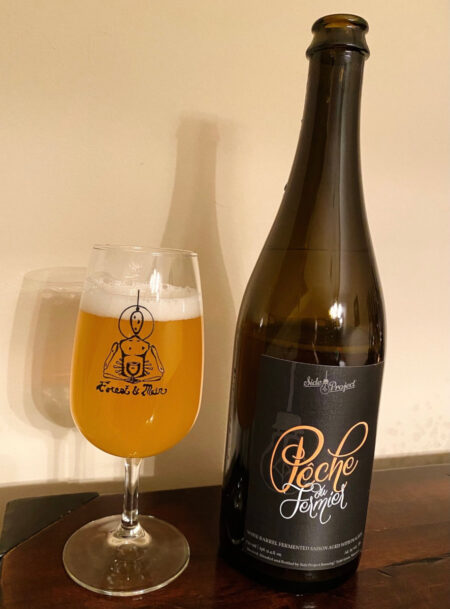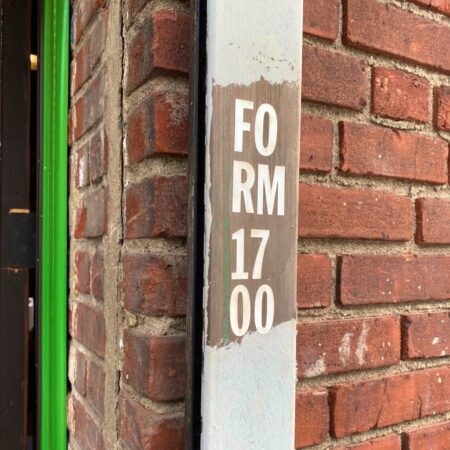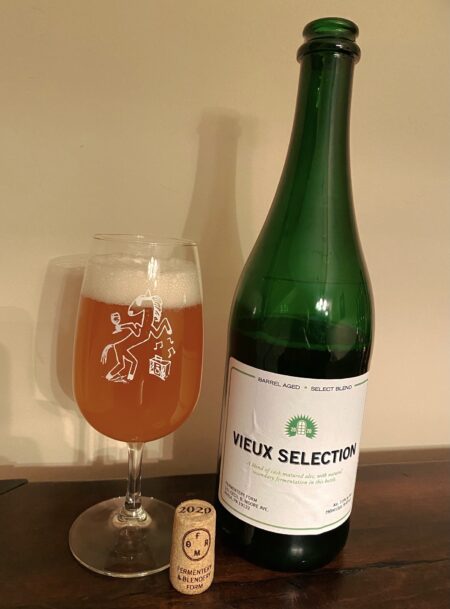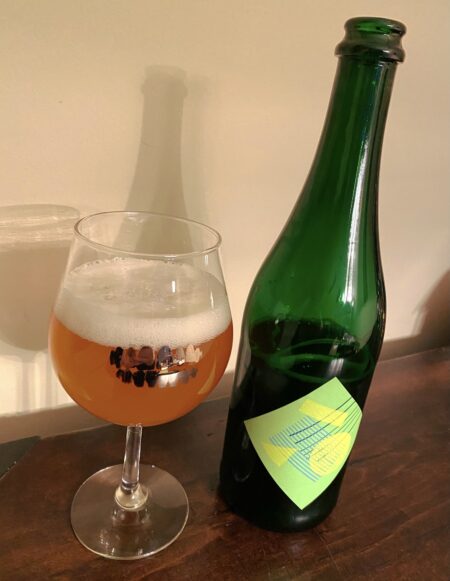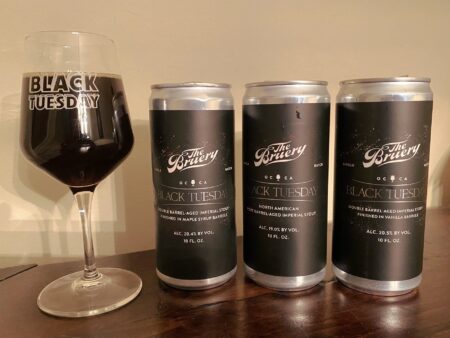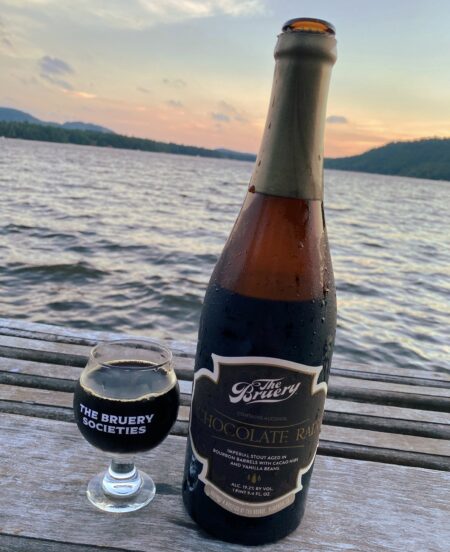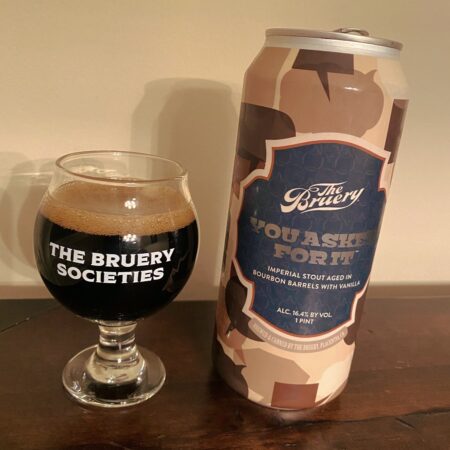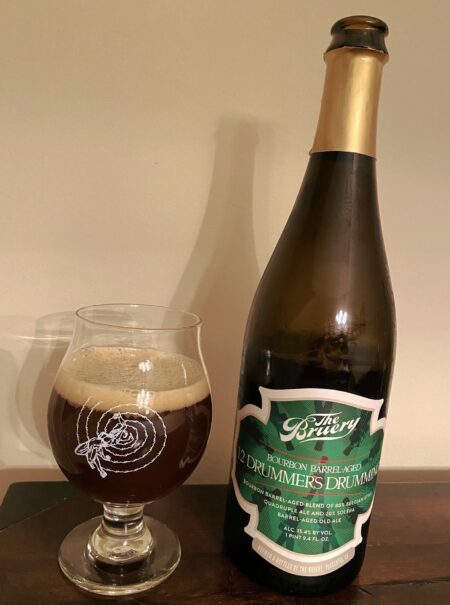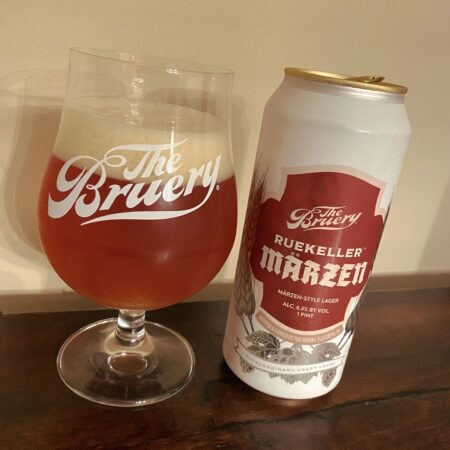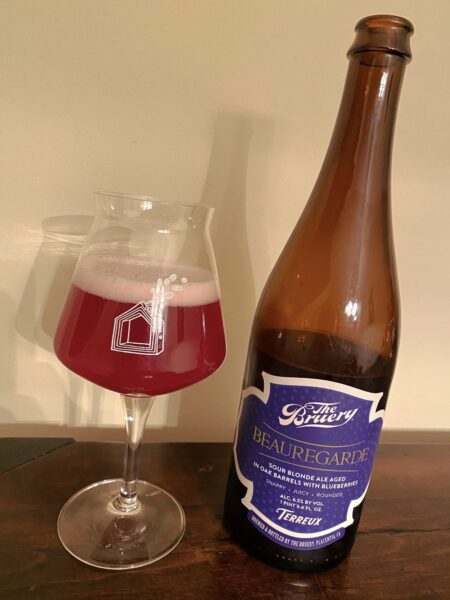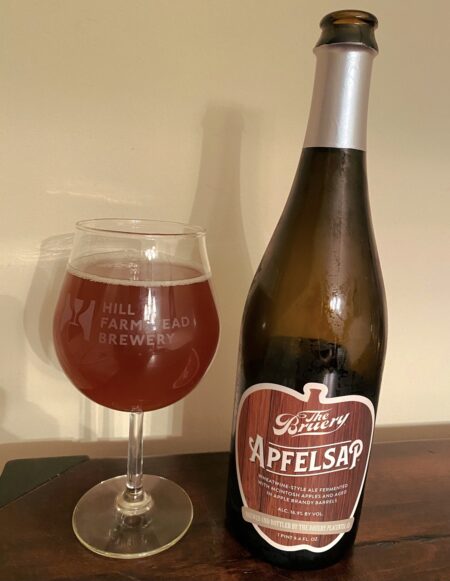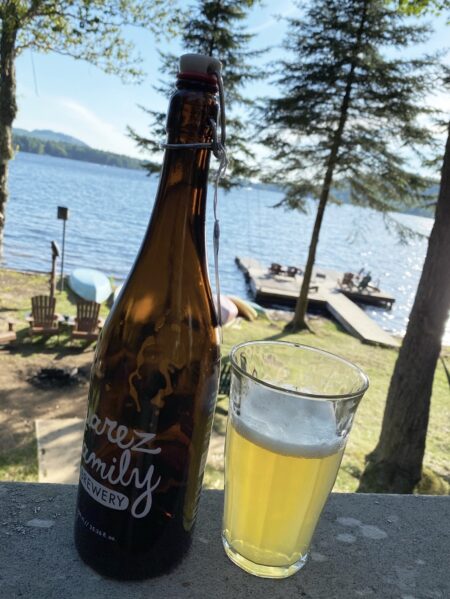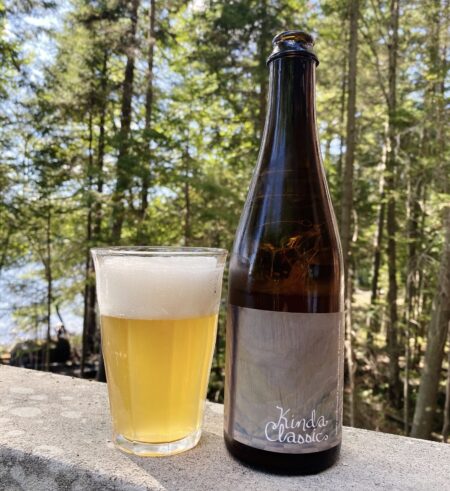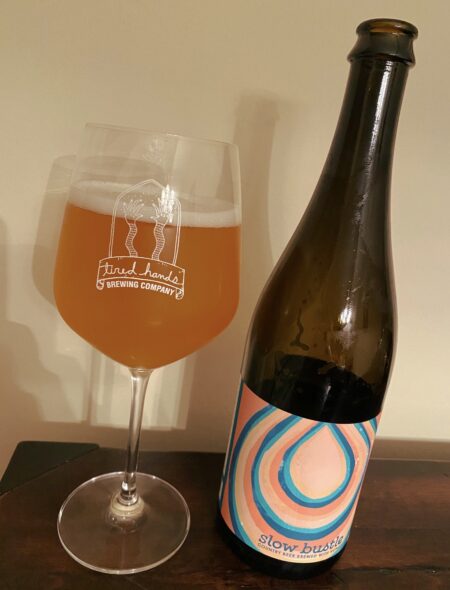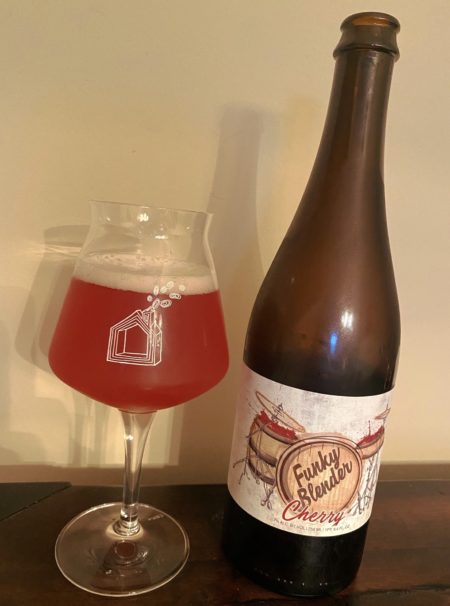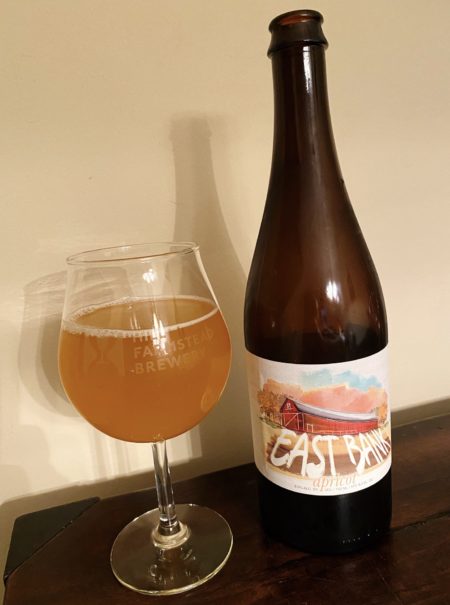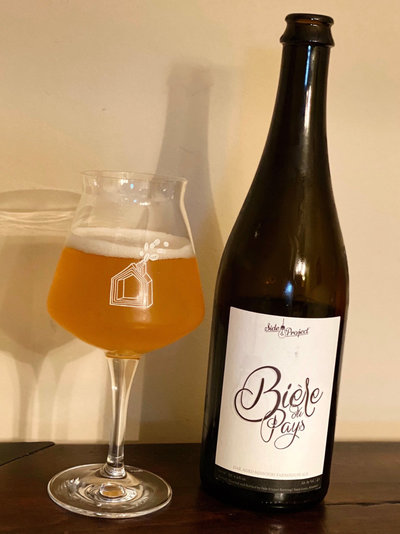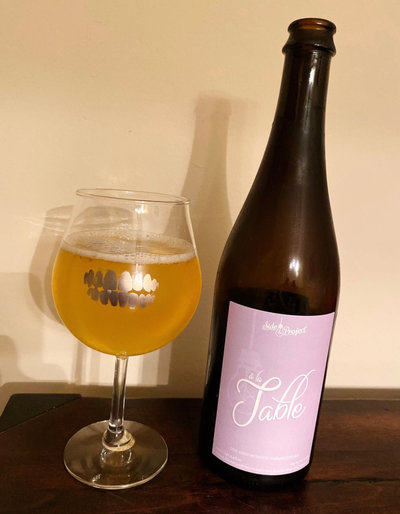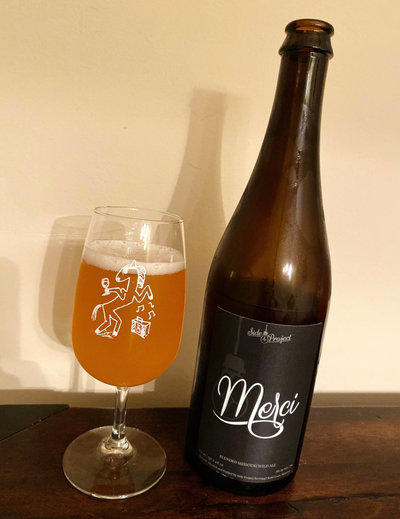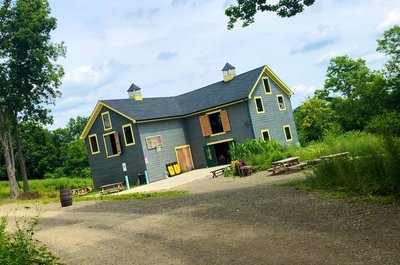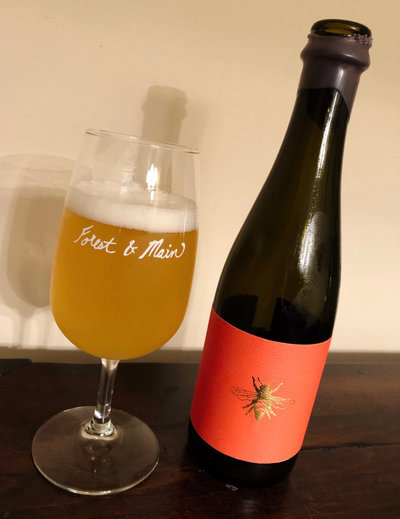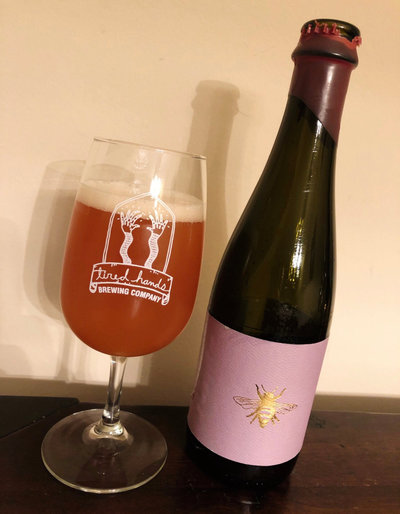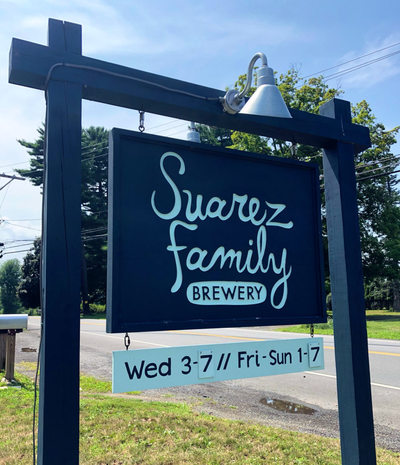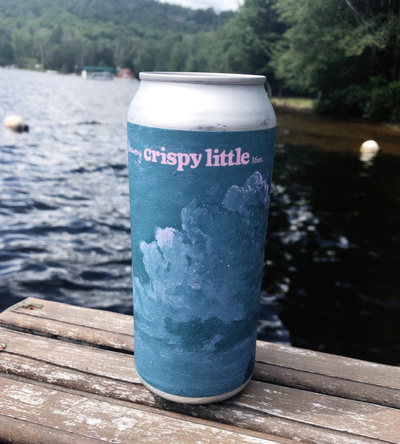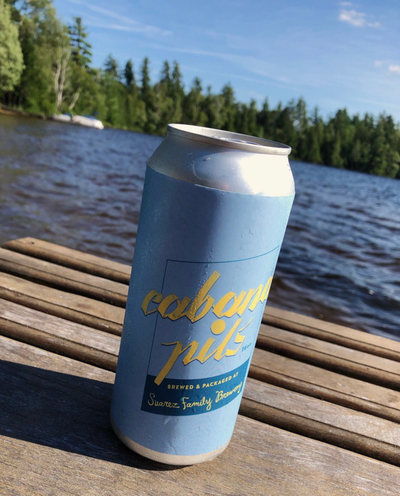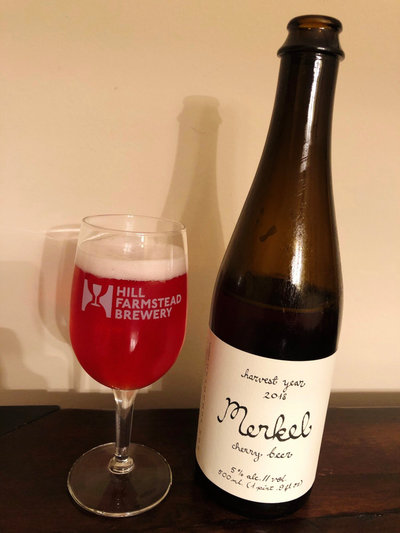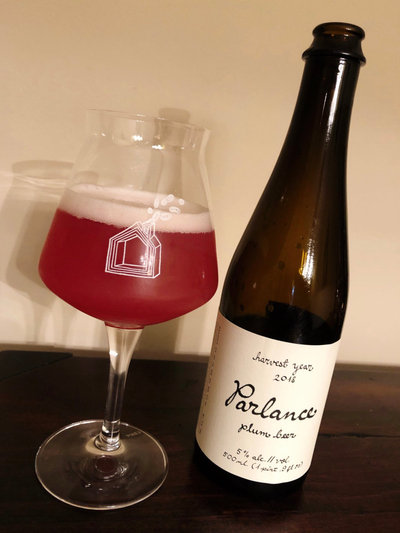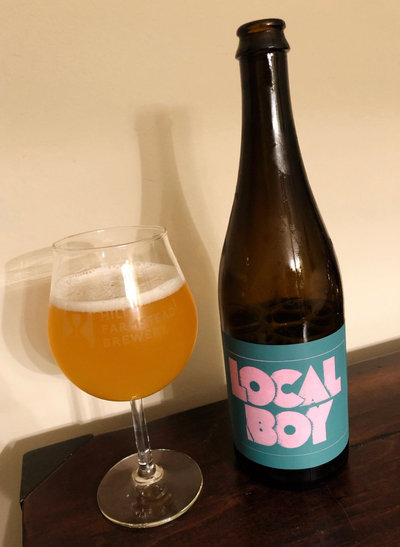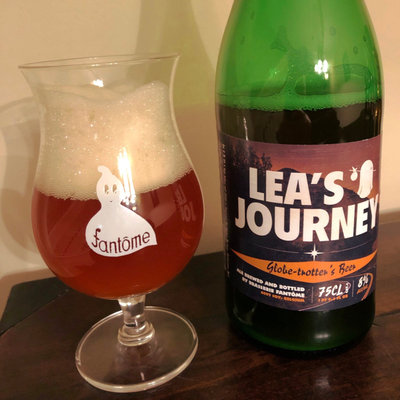On some of my previous travelogue posts, I devised military style operation names (i.e. Operation Cheddar for trips to Vermont, Operation Chowder for Boston) and I toyed with the idea here, but the only foody thing that stuck out to me during this visit was boiled peanuts… but while “Operation Boiled Peanut” actually has a nice ring to it, there are two things that held me back from that. One is that boiled peanuts are a more broad, regional thing and, like, yeah, so are cheddar cheese and chowder, but there is point two to consider, which is that boiled peanuts are actually kinda gross. I’m sure there are artisanal boiled peanuts made with amazingly flavorful herbs and spices or somesuch, but the stuff I had was… not that. So we’re just calling this a trip to Asheville.
For the uninitiated, Asheville is a city in North Carolina that sports the second highest breweries per capita in the US. There are some big breweries that have distro around the country (Burial), some that have sold out (Wicked Weed), and tons of places ranging from large-ish operations to tiny holes in the wall. Lots of stuff in the city proper, but also tons in the outlying area too. Plus, for whatever reason, the Asheville region seems to be the location of choice for West Coast breweries looking to set up an East Coast base of operations, like Sierra Nevada, New Belgium, and Oskar Blues.
According to my records, I was in Asheville for 5 days, during which I visited 28 venues and consumed 73 different beers. No, my body has not developed a superhuman ability to metabolize alcohol, it’s just that the grand majority of those were small pours (of, I should add, mostly sessionable stuff). Most places had options for at least a half pour, if not even smaller, and my novelty-addled brain always springs for the wider variety. I was going to try and organize this by grouping breweries into tiers and ranking them, but that seems like a futile effort, so I’m just going to follow along my checkins at each brewery visit (and the grand majority of venues were breweries, rather than bars or restaurants, though there were a couple of those).
One quick caveat: I didn’t take detailed notes on pretty much any of these beers (you’re welcome!), but I did rate them on Untappd, so I will include the numeric Untappd score in lieu of my normal letter grades (for clarity, this is a 5 star (“cap”) scale with .25 increments). A thousand pardons for the inconsistency. Alrighty then, let’s kick things off with the sellouts:
Wicked Weed
As luck would have it, our arrival in Asheville happened to cross paths with Wicked Weed’s Brewpub, so it was our first stop.
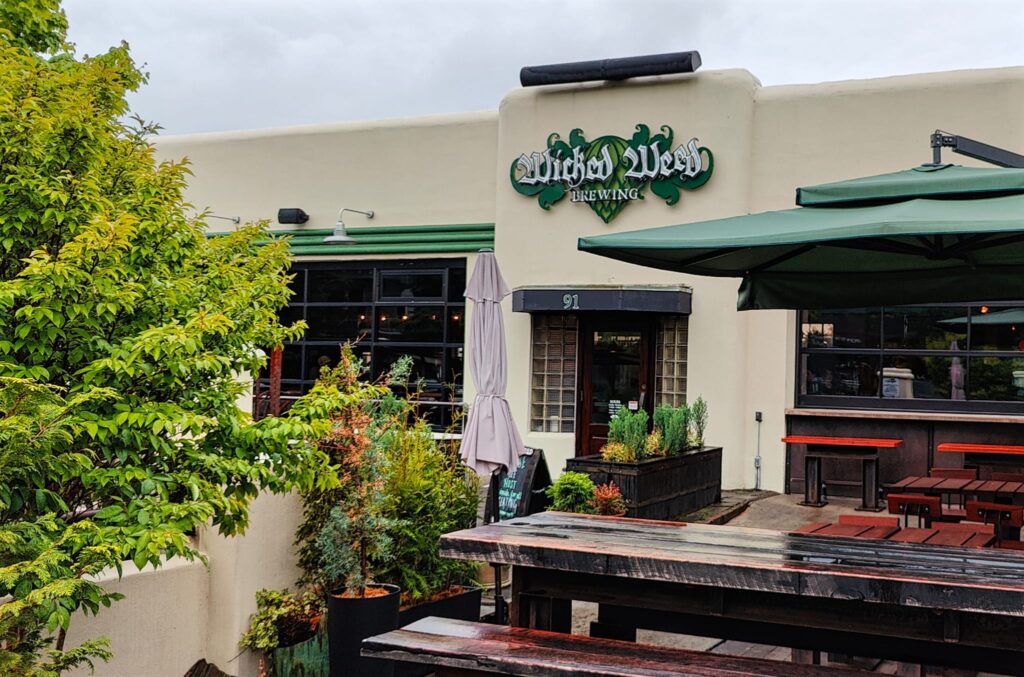
It’s a very nice place, clearly that AB Inbev money has been well spent, but it still has that quirky brewpub atmosphere, if a bit more upscale than you normally get. As per usual, perfectly cromulent beer was pouring:
- Haka – A New Zealand Style Pilsner, a crisp, refreshing start to the trip. 3.75
- Tea and Crumpets – An English Style Pale Ale, not something you see around often, but it was solid. 3.75
- Wallonia Rye Saison – Remember saisons that aren’t sour? No oak aging, no fruit, just some added rye and saison yeast. Very nice. 4
- Perni-Haze IPA – A hazy version of their (flagship?) Pernicious IPA, solid, but I think I actually like the original West Coast style version better. 3.75
So yes, they’ve sold out and I’m not wild about that, but this is a neat place, the beer seems the same as ever, and I’m not opposed to visiting the Funkatorium on some later trip.
Green Man
Green Man is one of the craft pioneers of the Asheville scene. I had been advised by multiple people to visit the “older brewpub” location (which is referred to as Dirty Jack’s), but the night we visited, it was closed for a “Private Event”. Standing outside in the rain like abandoned puppies, longingly looking in at a group of happy people having a great time in a place with a nice looking atmosphere, we eventually gave up and walked a few feet up the street to the Green Mansion, which was very nice and spacious, but didn’t seem to have the personality of the other location. A much more industrial feel with a few nice quirks. Oh well, next time. As for the beer:
- Ommagio – Perfectly cromulent Italian-Style Pils, it doesn’t quite hold up to the best I had, but it was quite nice. 3.75
- Nerd Nectar – Solid little NEIPA made with New Zealand hops. 4
Would absolutely visit again, if only to check out that original location.
Catawba
I feel like we saw several different Catawba taprooms throughout our travels, but the one we actually stopped at was the Asheville Biltmore Village location. It happened to be a quizzo night, so we informally played a round or two, but they were all music related rounds, so I didn’t do so well. Anyway, decent enough beer here, and as a little treat, here’s a candid portrait of your humble blogger next to his Altbier (and some IPA or somesuch):
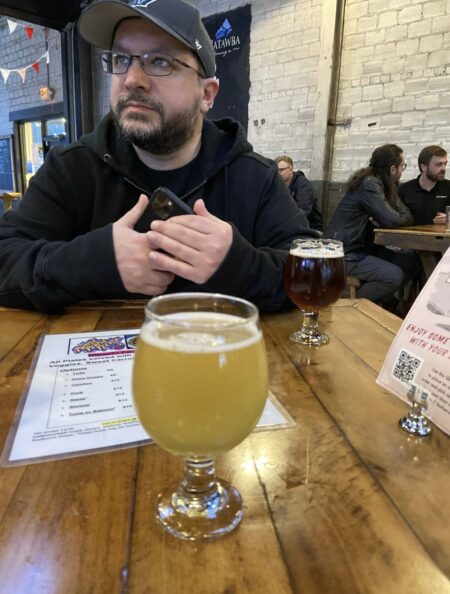
- Altbier (2023) – Love this style, and this is a fine example, if not great. 3.75
- Small Batch Galaxy – West Coast IPA brewed with Galaxy hops, very nice stuff. 4
- Small Batch ESB – Not going to blow you away and I had better ESBs during the trip, but this hit the spot. 3.75
Perfectly cromulent stuff, probably wouldn’t seek it out upon a revisit because there’s just so many places that I still haven’t been to, but I wouldn’t be opposed to stopping in if it was convenient either.
Burial
I actually visited two different Burial locations (on two different days).
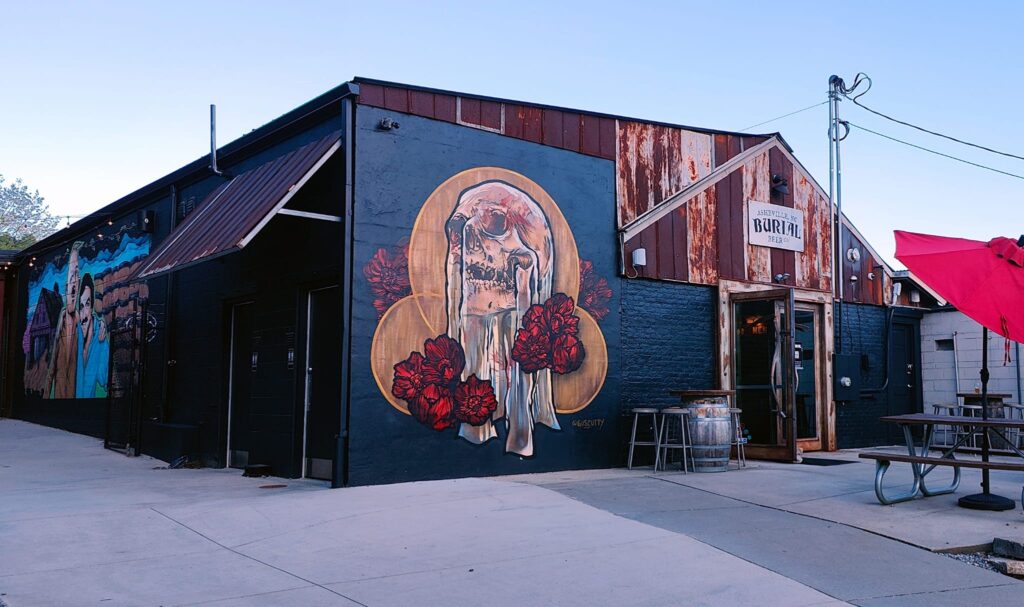
The Asheville South Slope location was one of the hipper places in town, filled with kitschy decorations and artwork like this mural:

The Forestry Camp Location feels a little more “grown up” but it still retains its personality (oh look, another weird mural). They had food there too, and this breakfast sandwich (ham, egg, and cheese on a biscuit) was one of the best things I ate all week:
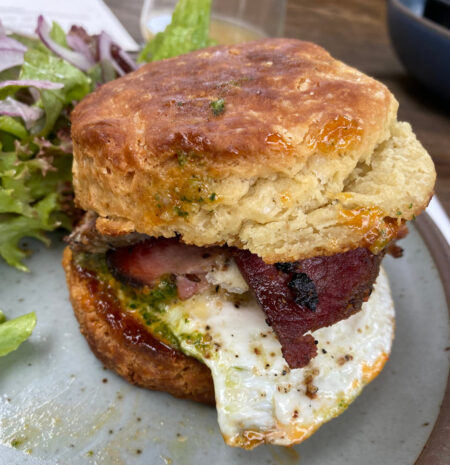
And oh yeah, they make beer too:
- Scythe Dry Hopped Red Ale – Oh man, remember these? This style used to be more common, and I enjoyed dipping in to this one. Certainly not the best I’ve had, but nice! 3.75
- The Residual Imprint of Nearly Illogical Beginnings – A NEIPA that clearly uses the Tired Hands playbook in terms of naming, it’s a good example of the style typical of good haze purveyors. 4
- Prophetmaker – This was the first I beer I had at the Forestry Camp location, a hazy pale ale at 5.3% ABV that drinks pretty well. 4
- That Which Induces Boundless Experience – Similar to the above NEIPA with the Tired Hands naming convention, it’s another above average hazy. 4
- Billows – A dry hopped Kolsh, a bit light after the NEIPA (drank these out of order, I guess), but I enjoyed (might bump it up to a 4 if I had it first). 3.75
Certainly recommended if you like that hipster vibe, and this was the one place I snagged some beer-to-go from (mostly because a friend asked and we split up some 4 packs).
Mountain Layers Brewing Company
The next morning, we headed west of the city and worked our way back to town, stopping at a few places. I was with some folks who had been here before and they really liked it, but fair warning: it’s a bit of a hike to get here. If you’re into white water rafting, it’s right near some apparently good rapids, so there is that as well. We also stopped at a place just up the street for lunch that was excellent.
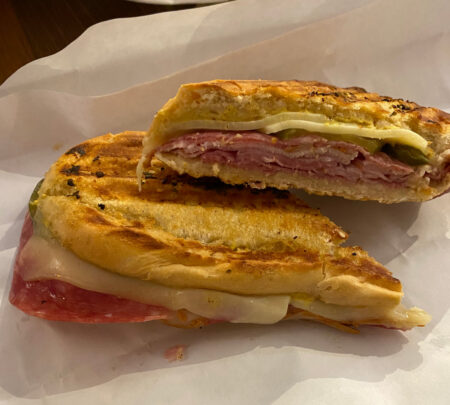
High Test Deli had an excellent assortment of sandwiches that made for a perfect start to the day, after which we headed over to Mountain Layers for a few brews.
- Get Off My Kolsch Lager – A bit of a misnomer, but a pleasing beer. 3.75
- Isolated Mind – All Mosaic Pale Ale, rock solid. 3.75
- Tale of the Dunkel – A fair example of the style. 3.75
If you find yourself out this way, it’s certainly worth stopping, but I don’t know if it’s worth the trip on its own – there’s just too many breweries closer. That said, there are other outdoor activities in this area that might be an attraction on their own, and if it wasn’t raining and we had more time, it might have been more productive.
Angry Elk
As we made our way back to town, we spied this relatively new brewery and decided to stop in. Great logo, but only so-so beer.
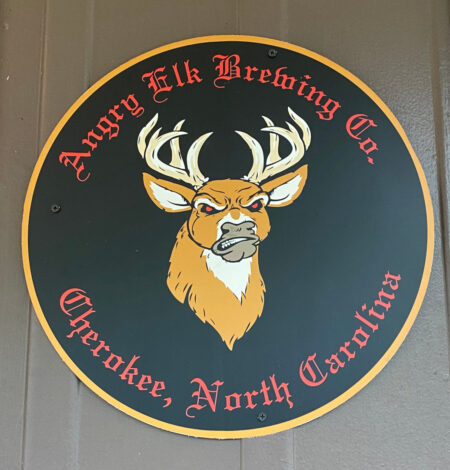
Still relatively far from Asheville proper, pretty standard small brewery setup here, and I got a flight of brews:
- Czech Point Pilsner – Not the worst example of the style I’ve had and it’s not, like, infected or anything, but not an encouraging start. 3
- Slice of Hefen – This Hefeweizen was probably the best thing I had here, but it’s not exactly great either. 3.5
- Copperhead Hazy IPA – A not particularly accomplished NEIPA, it’s not terrible, but there’s far, far better out there. 3
- Proctor Town Porter – Not great, but I could drink more of this. 3.5
I feel a little bad because the folks here were very nice and it’s clearly the only brewery in the area, but there’s far better out there. Sometimes new breweries need some time to get their feet under them, but as of right now, I probably wouldn’t return here.
Balsam Falls
Continuing our way back towards town, this one is more like it. It’s still pretty far, but I think it was the highlight of the day.
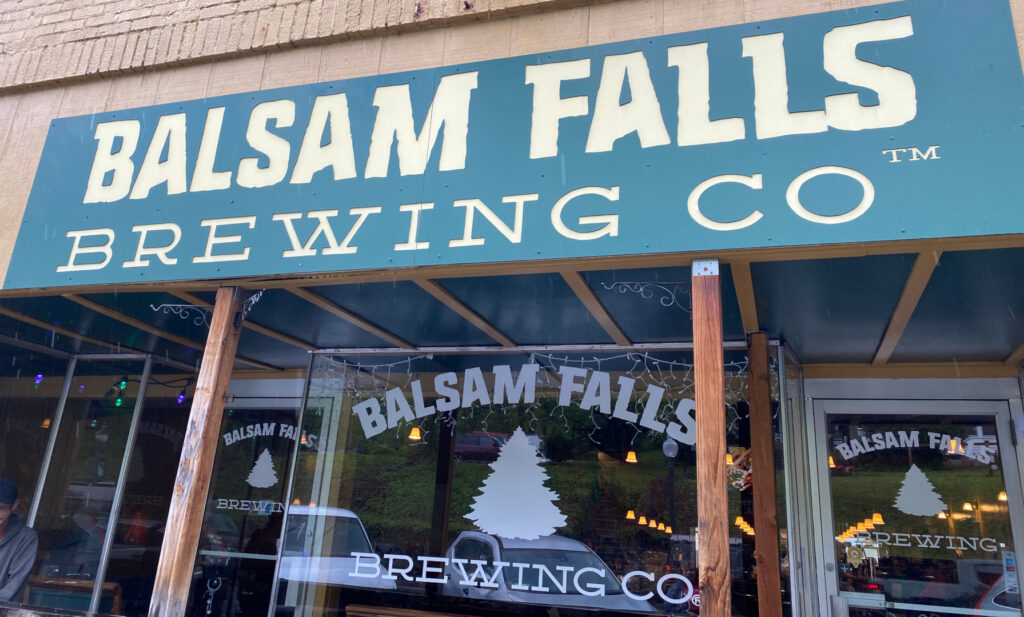
Typical small brewpub atmosphere, I was impressed with the taplist and was able to grab a few things that were in short supply whilst in Asheville:
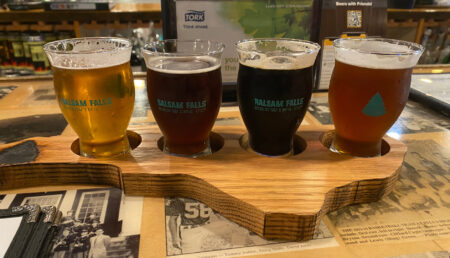
- Elevensies Livener – A modestly good dark English mild, certainly a step up from Angry Elk. 3.75
- Bells Will Be Ringing – I guess it’s not a good sign that a Christmas/Winter Warmer is still pouring in April (then again, Balsam Falls seems holiday themed?), but I like the style and this was a pretty damn fine example. 3.75
- Double Mist DIPA – West Coast DIPA, very good and tasty. For whatever reason, I didn’t spring for a lot of DIPAs or high ABV brews during this trip, though in a lot of cases it’s just because they weren’t pouring that many. Glad I got this one. 4
- Kings Shadow – I usually like to vary my styles, and I love a good Russian Imperial Stout, but this was the only place pouring one (or at least, the only one I noticed), and it’s a rock solid take on the style and I was happy to see it. 4
Something about this place just tickled me, and while it’s actually still quite far from Asheville, it might be worth the trip next time.
One World Brewing
After finally arriving back in town and grabbing some dinner at a place called Pack’s Tavern (standard pub fare) we walked over to a seemingly hidden alley and basement brewery called One World Brewing (it’s not quite the obscurity of Fermentary Form and there’s an actual sign, but close enough). It was a neat little place, great atmosphere.
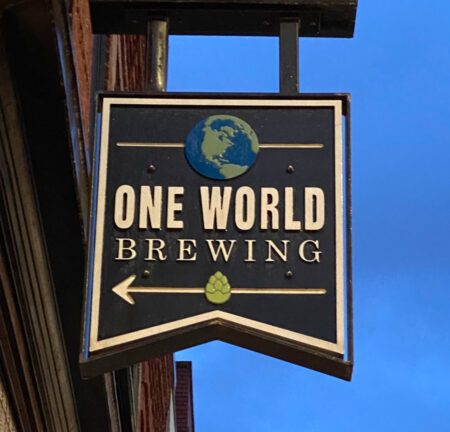
They had some live music provided by a guy named Isaac Hadden, who was amazing! He was playing guitar by himself, but doing all sorts of crazy stuff, looping background tracks and playing over them, etc… In speaking with the bartender, it seems like this kid is going places. Listening to him play, he was clearly very talented and I can believe we’ll hear more about him someday. Anywho, onto the beers:
- Beer For Keeping – Very nice little Bière de Garde, yet another style you don’t see around too often, which was welcome. Spicy, herbal, floral, another one of those non-sour farmhouse ales, always welcome. 4
- Springfest Vienna – Not my favorite, but it got the job done. 3.5
- Citra Bomb IPA – Not quite a NEIPA, but not really WC either, a nice balance… 3.75
It’s a cool place that’s well worth visiting and I’m totally going there again.
Sierra Nevada – Mills River
The next day took us to points South, starting at Sierra Nevada’s gorgeous (and gigantic) East Coast facility at Mills River.

Spacious indoor and outdoor seating, though by the time we left, the place was quite crowded. Good lunch and a bunch of brewpub exclusive beers (along with the usual stable of offerings) to be had:
- Stein Altbier – As per usual, rock solid take on traditional German style. 3.75
- Oktoberfest 2023 – Yes, you read that right – more on this below. Short story: Sierra Nevada heard our indignant rage last year and will be bringing the Oktoberfest back to national distro (and they’re bringing back German collaborations too!) Exciting news! 4
- Cryo Fresh Torpedo – I haven’t had a regular Torpedo in, I don’t know, a decade or so? But man, I really enjoyed this spin on it that utilizes cryogenically preserved fresh hops. 4
- Summerfest – Somehow had never had this before, a nice little German style pils. 3.75
- Draught-Style Pale Ale – I never knew this was a thing, but apparently the bottled Pale Ale is different than the draft Pale Ale. I didn’t have them side by side, but Pale Ale is a classic, so… 4
So I was chatting with the bartender about the Oktoberfest and clearly I wasn’t the only one who showed excitement at the prospect of Oktoberfest returning, and she actually pointed out that this year’s German collaborators (hmm, that sounds menacing, but this isn’t 1940, so you get what I mean) were right over there, working on this year’s Oktoberfest (apparently what I was drinking was a test batch or somesuch).
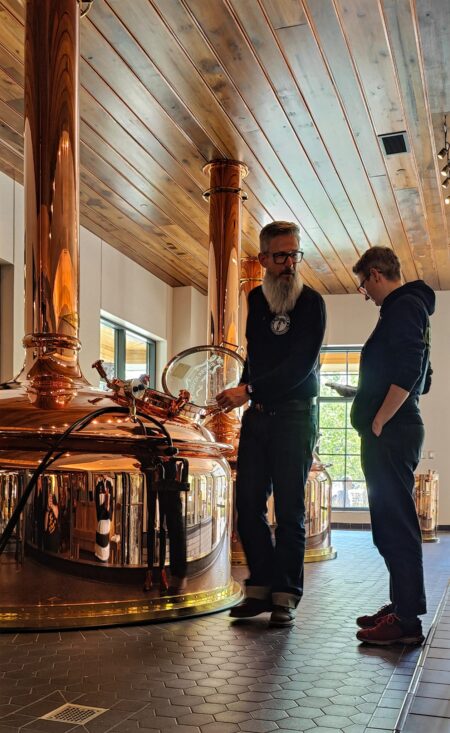
They were from a very small Hamburg brewery called Kehrwieder Kreativbrauerei, and they were very nice. I’m very much looking forward to this year’s Oktoberfest!
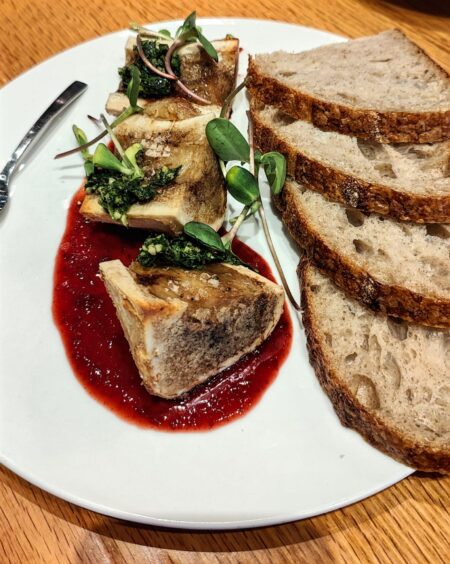
They offer formal tours, but also self-guided ones, and it’s a large, fun facility to walk through.
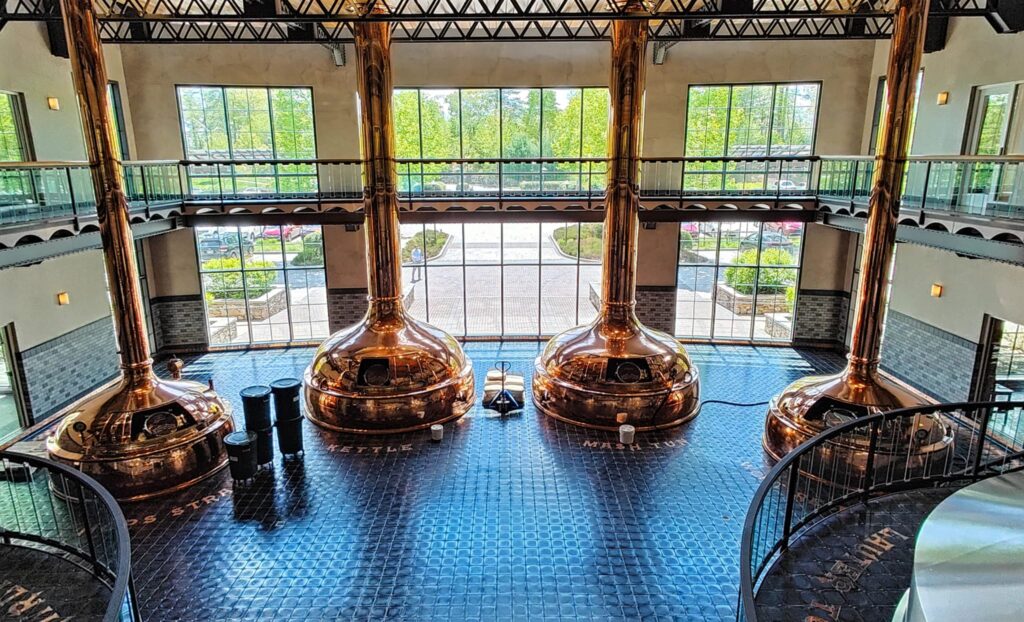
Definitely worth a visit, and I will most certainly make the trip next time I’m in the area. As an added bonus, you can stop at the next brewery on the way back into town:
Burning Blush
As we worked our way back into town, we hit up what became my favorite discovery of the entire trip: Burning Blush.
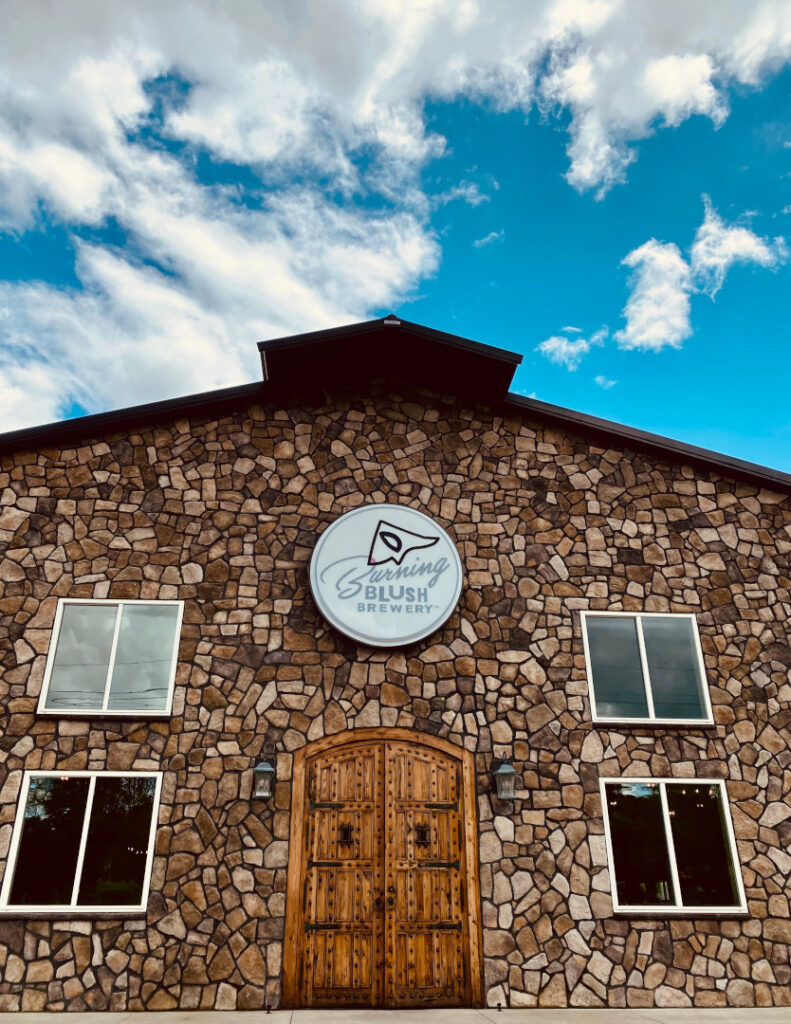
A beautiful taplist filled with beer-flavored-beer, all of them excellent takes on their respective styles, no matter how obscure:
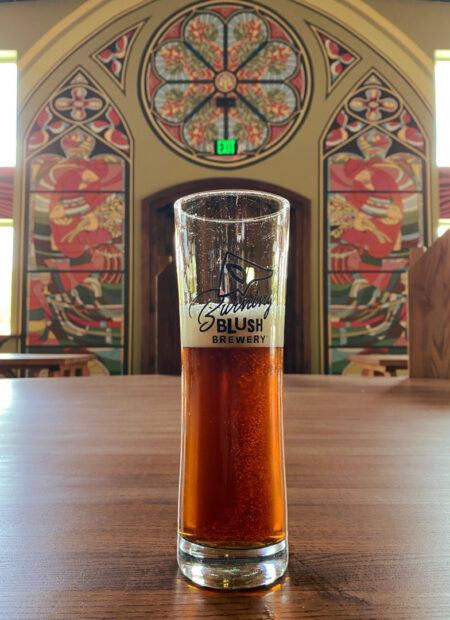
- An Opportunity To Reset – An excellent 3.8% ABV IPL that does just what the name says: it was a perfect palate cleanser. 4
- Simply N.C. – Another pale lager, this one made with 100 percent North Carolina ingredients. A collaboration with NC State University and a few other breweries. Also excellent. 4
- Road To the Morning – A very good Altbier. I was surprised at how often I saw this style during the trip, and this was probably the best I had. 3.75
- Sanctioned Buffoonery – Perhaps the best beer name of the trip? Another straightforward, non-sour saison, most excellent. 4
- Windy Summer – What’s another word for excellent? I seem to be saying that a lot here. Um, this is a fantastic ESB. 4
Definitely a highlight of the trip and a must visit for lovers of traditional beer styles. The location is a pretty standard beer hall type place, but look at how beautiful this is:
It doesn’t get much better.
Brouwerij Cursus Keme
Now we come to the weirdest brewery of the trip, and I say that with affection. Technically in town, it’s on the outskirts in a seemingly remote location.
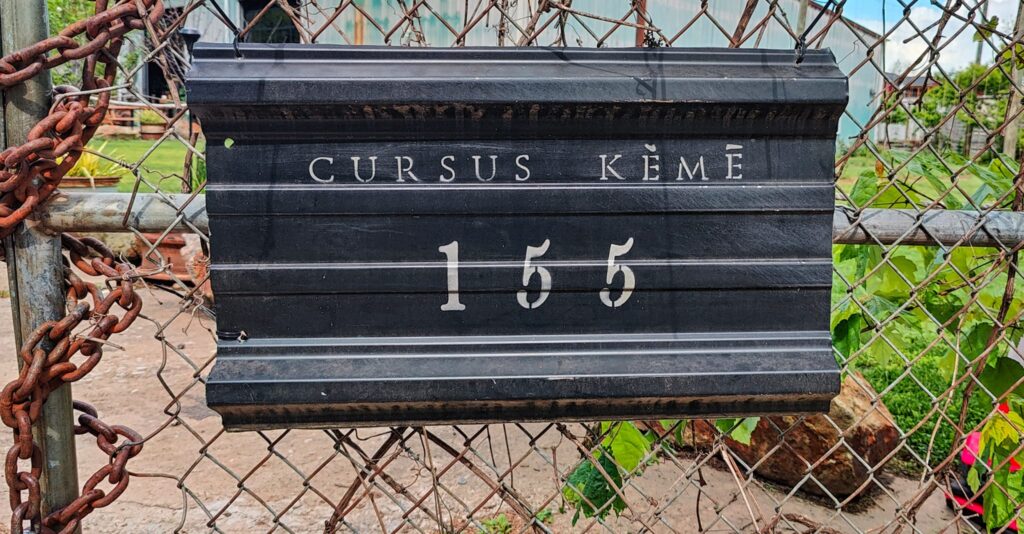
Not super well marked, but that’s part of the charm of the place, which is clearly going for a reclaimed industrial sorta vibe.
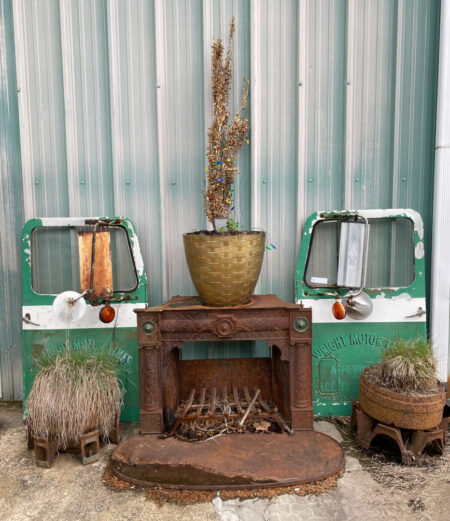
Actually very pretty, and an interesting taplist too (plus, some cool backgrounds for beer pics):
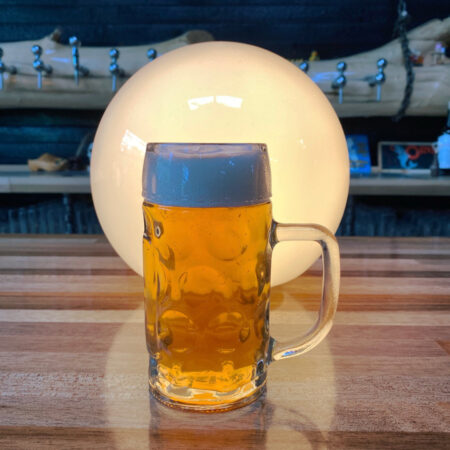
- V6 – Solid little pilsner to start things off, well done. 3.75
- Raptors in Trees – A Brett ESB? Sure, why not. Funky, but very tasty stuff. 4
- Psaurum – Who had “California Common” on their obscure styles BINGO card? A nice change of pace for sure. 3.75
- Nitro Stout – Exactly what it says, with that gorgeous Nitro cascade, and very tasty stuff. 4
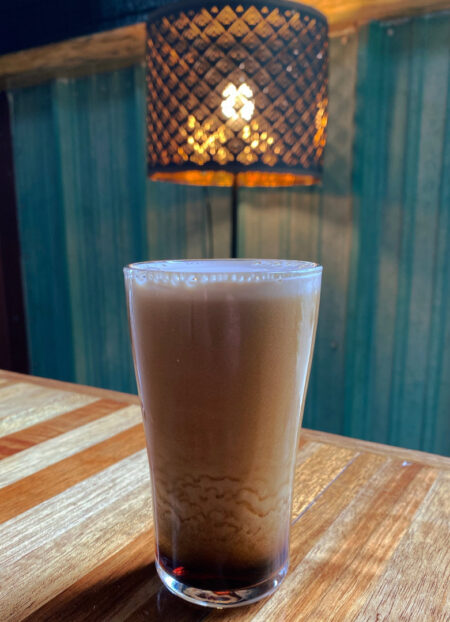
Recommended for those who don’t mind a little quirkiness. I would certainly like to return here.
New Origin
Just a hop and a skip away from Cursus Keme is New Origin, a decidedly more conventional brewery taproom type experience. Small warehouse with an outdoor section, kids running all over the place, pretty standard stuff, maybe a hint nicer than usual. We stopped in but didn’t stay long because we were getting hungry.
- Mandarina Pils – A pretty uninspired hazy pilsner, not the worst thing in the world, but not as good as what we were just drinking. 3.5
I’d be open to giving this place another shake, especially since its so close to Cursus Keme.
Buxton Hall Barbecue and Chicken Palace
Everything I’ve covered so far has been a brewery, but this restaurant is worth mentioning. On the recommendation of a friend, I had the Buttermilk Fried Chicken Sandwich, which was fabulous. Apparently there’s a separate place called Buxton Chicken Palace that specializes in this sandwich, and I can see why. The BBQ comes recommended as well, though I did not partake upon this visit. Still, located right near Green Man, Burial, and several others, it’s a solid option.
- Edmund’s Oast Bound by Time – Not actually an Asheville beer, this is made in *gasp* South Carolina. It’s a pretty straightforward IPA, paired well with the sandwich and fries. 3.75
Wedge Brewing Company
Neat little location, another one of those reclaimed factory type locations, apparently there’s a hip record company right there and live music and a very nice outdoor space.

I was perhaps a little burned out by the time we got here (it’d been a long day of drinking!) and my palate was a little fried too, but there was some decent beer to be had:
- Hoppy Lager – Pretty standard stuff, though as previously mentioned, I didn’t exactly have the freshest palate. 3.75
- Schwarzbier – Again, nothing to write home about, but decent enough. 3.75
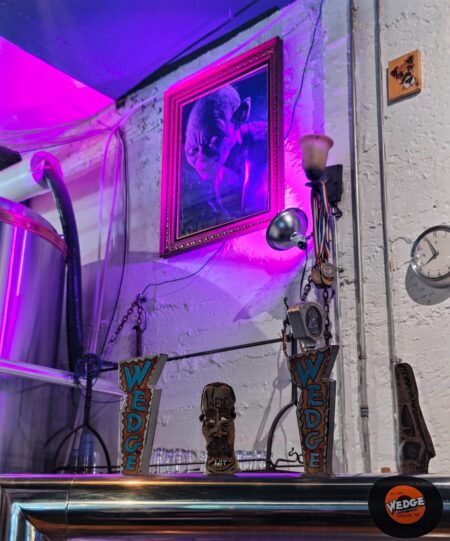
Worth visiting for the location moreso than the beer, but I’d be open to revisiting…
Zebulon Artisan Ales
Tiny little out-of-the-way brewery that came recommended by a friend, really glad we made time to stop at Zebulon Artisan Ales. Small seating area inside and even smaller area outside and not much the way of convenient parking, but damn, the beer is fantastic, and they’ve got some nice decor and design going on as well.

Fun sign in the bathroom too:
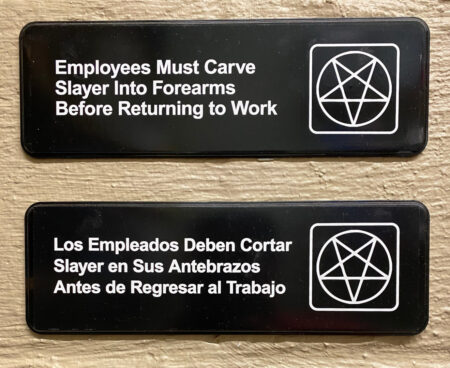
I didn’t realize until after that Zebulon is apparently a reference to a confederate officer in the Civil War and later North Carolina politician with a… questionable reputation, though for what it’s worth, none of that was in evidence at the brewery.
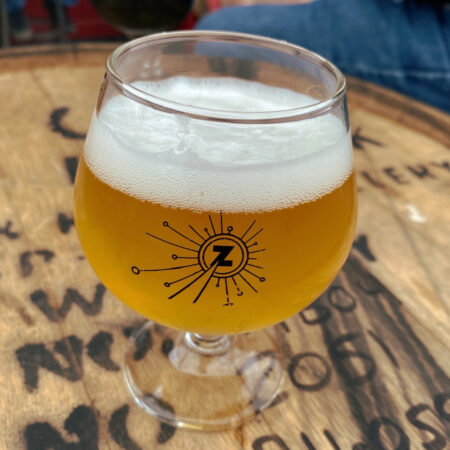
- Bramling Cross Bitter – Damn good take on the style. 4
- Czech Tmave 12° – Another fantastic take on an uncommon style, really delicious. 4.25
- Mandarin Saison – Not quite the revelation of the previous two, but I always appreciate non sour takes on saisons. 3.75
- House Pilsner – Spot on pilsner here, really great. 4
They had a barrel aged stout on tap, but I avoided that because I thought I would be able to snag a bottle but alas, this was not to be. Next time Zebulon! And there will be a next time. Recommended.
Zillicoah Beer Company
It’s a battle of the Z breweries! Zillicoah was significantly larger in terms of brewing capacity and seating capacity (not to mention parking), both inside and outside. Indeed, there was a visible stream out in back, and they had a pretty nice Taco food truck in residence, which was a welcome treat by this point in the day. Only had a couple of beers here, but they were promising:
- North German Pils – Perhaps suffers a bit in comparison to the Zebulon House Pils, but this was just fine. 3.75
- Dunkel – Another solid brew, always enjoy a good dunkel. 3.75
Worth visiting again, if only to sample more of their brews.
DSSOLVR
Back in downtown Asheville, this brewery reminds me a lot of Tired Hands. NEIPAs galore, kooky naming conventions, total hipster vibes.
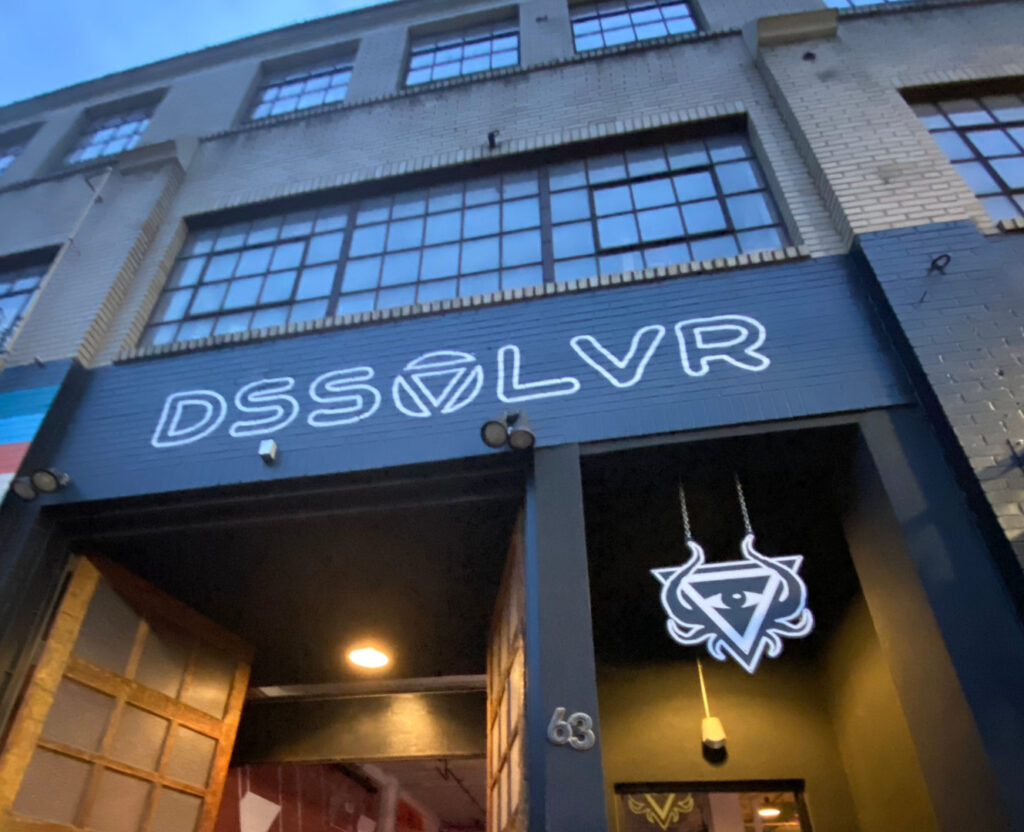
The only weird thing: the place was nearly empty on a Saturday night. Odd. I don’t know enough about hipster trends, and indeed, the very term “hipster” is probably not relevant anymore (sort of like the Web 2.0 style convention of removing vowels from your name), so maybe that’s why it wasn’t so crowded? Solid beer though!
- A Long Way To Travel – Pretty standard NEIPA brewed and DDH with newfangled hops, many of which I don’t recognize because I can’t keep up with this stuff anymore. 3.75
- Pain Into Power – After several days of drinking mostly session beers and mild styles, this Apple Brandy Barrel Aged Wheatwhine was certainly an eye opener. Aged for 28 months and clocking in at 12.5%, it was quite nice and a welcome change of pace at this point in the week. 3.75
Would definitely like to check out more from DSSOLVR, and perhaps solve the mystery of the lack of crowds there.
Fonta Flora
Our last day in Asheville started with a bit of a hike out to Fonta Flora. There are a couple of locations, but we hit up the Whippoorwill Farm Brewery (about an hour East of Asheville), which was a cool little place with a bunch of outdoor seating (alas, a bit of an overcast, drizzly day). Of all the breweries in this post, I was already most familiar with Wicked Weed and Fonta Flora. It seems everyone would stop here and bring a bottle back to share or something. As such, I pretty much knew what I was in for, which is to say, solid beer:
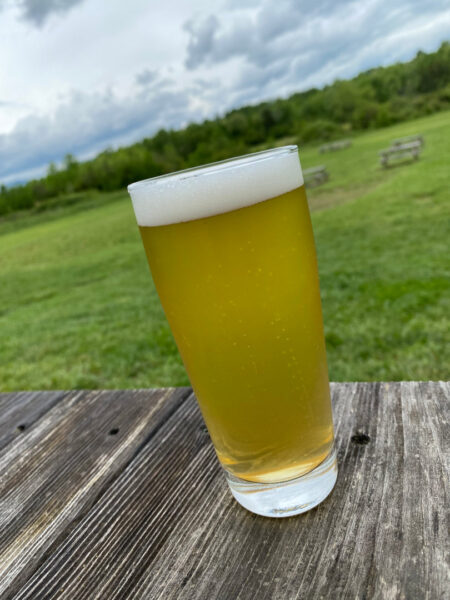
- Local Lo-Cal IPA – A 4% session IPA and pretty good as these sorts of things go, though not the best in style. 3.75
- Nebo Pilsner – Straightforward pils that, for some unknown reason, I neglected to rate. I don’t remember anything off about it, but I think I was maybe having some internet connectivity troubles. Let’s just call it a 3.75
- Hefeweizen – In case I haven’t demonstrated this enough in this post, I like that I could get one of these unsexy styles at just about every brewery we went to. Hefeweizens were, at one time, a key craft gateway beer, and this is a nice take on the style. 3.75
- Hop Beard Mountain Man – West Coast IPA made with amarillo, citra, mosaic and simcoe. It’s like 2011 again, and it’s great. 4
This was also one of the few places where I snagged a to-go beer or two. The ’22 Three Year Blend was a great American Wild Ale with a gueuze-like aging/blending regimen (I described it as “bubblegum funk” which is, uh, good) and the Coracoid was a decent barrel-aged barleywine/stout blend. Would definitely be interested in getting back here sometime.
Whaley Farm Brewery
Tiny, miniscule little brewery about halfway between Asheville and Fonta Flora (and right next to our next stop), I love what they’re doing here.
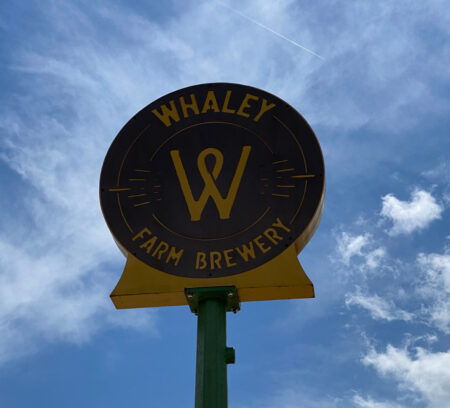
The location isn’t much to write home about, pretty standard small tasting room. But several beers on cask that were fantastic, and while we were only here for a short time, I really wanted to sample the entire menu. I had to settle for these two cask offerings:
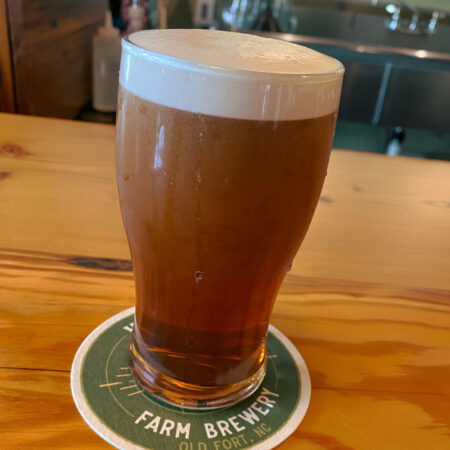
- Burton Bitter Ale – A 4.2% ordinary bitter served on cask, this was fantastic. I know I’m just a lowly American who has no business commenting on British pub session beers like this, but this beer is worthy of the following. 4.25
- Mild Ale – A 4.5% mild also served on cask, really good stuff. 4
This is a brewery to keep an eye on, and one of my favorite discoveries of the trip. Definitely worth stopping if you’re making the trek to Fonta Flora (or as a destination in itself!)
Hillman Beer
Just across the street from Whaley Farm sits the Old Fort location of Hillman Beer, which strikes me as a sorta modernized version of the early craft brewpub chains (there are other locations, including one in Asheville proper).

Large place, it was actually pretty crowded, with a pretty standard brewpub style menu and average beer (though, again, a nice variety of options available).
- Ode to Mosaic – A 5% IPA made with Mosaic, pretty standard stuff… 3.75
- Altbier – I can’t believe how many altbiers I encountered in the Asheville area; this one is fine, if unremarkable. 3.75
- Schwarzbier – A nice dark lager, not going to blow anyone away, but certainly not bad 3.75
- Six and Candy – Apparently their 6th Anniversary beer, a Belgian style dubbel. This is one of my favorite styles, so I found this slightly disappointing, though not bad. A little under-attenuated and too sweet for the style, with not enough yeast character, but it’s still decent. 3.75
Not something I’d be inclined to seek out again, though I’m not opposed either. In this scenario, I’d rather have spent more time at Whaley…
Lookout Brewing
No one had heard of this place, but it was on our path so we decided to stop in. It turns out that there’s a reason no one had heard of it. Granted, we didn’t stay long, and part of the experience was soured by a bunch of unruly children hanging around (to be clear: really young, diaper wearing children). This isn’t exactly the fault of the brewery, but… I only had one beer and it was lackluster at best.
- Staycation IPL – Deeply underwhelming, muted hops but flabby base that lacks any discernable character. It’s not the worst thing I’ve ever had or “defective”, but it’s not worth seeking out. 2
I could maybe be talked into giving them a second chance, but you’d have to be convincing.
Black Mountain Brewing
Another small place in the vicinity of Lookout, we popped over here looking for something a little better. And while it was certainly a step up (and we randomly ran into a group of folks who were also from our area in PA/DE – it’s a small world, after all), we didn’t end up spending a lot of time here.
- Blackest of Mountains – A 5.8% oatmeal stout with cacao nibs. Honestly didn’t really get much in the way of cacao character, but it was an ok beer and a big step up from Lookout. 3.5
Again, I could see myself stopping in here again at some point, but it would require convincing.
Hi-Wire Brewing
Another brewery with multiple locations, though this looked to be a much larger scale operation than I would expect out of the brewpub model (but they have taprooms all over Asheville and environs as far afield as Ohio, Kentucky, Alabama, etc…). We were at the Biltmore Village location, which had a nice outdoor area and standard warehouse style tasting room type of thing on the inside. It was a big operation, and I got the impression that a bunch of other locations don’t actually “brew” the beer in the location. Anywho, we were on the trail end of our trip, so we didn’t stay long, but I’d be curious to try more:
- Italian Pils – Bartender was surprised that I knew what an Italian Pils even was… but alas, this means I was comparing this with the likes of Wayfinder and Human Robot’s examples of the style, which are certainly better. That said, after Lookout and Black Mountain, this was quite nice. 3.75
Epilogue
There were a few other stops along the way, including the Mellow Mushroom (a perfectly cromulent pizza place, though it doesn’t really stand out when compared to the standard pizza shops in my area) and Off the Wagon Dueling Piano Bar (which was apparently an off nite, so they only had one piano player and an anemic crowd, but he was pretty good. If the crowd was bigger and more into participating, it could have been a lot of fun. I don’t understand why you’d go to a place like this and sit, stonefaced and quiet.) Packs Tavern also hit the spot at one point; casual fare and a decent enough taplist.

All in all, this was a great trip. Despite all the above, I feel like I’ve only scratched the surface of what’s available in the area. I would really enjoy heading back down to Asheville at some point. In particular, I’d like to check out some of the finer dining options in town, and there are plenty of breweries that deserve investigation.
Many thanks to Kaedrin compatriots Danur and Tom for their guidance during this trip (I… may have pilfered some of their pictures as well). Cheers!
